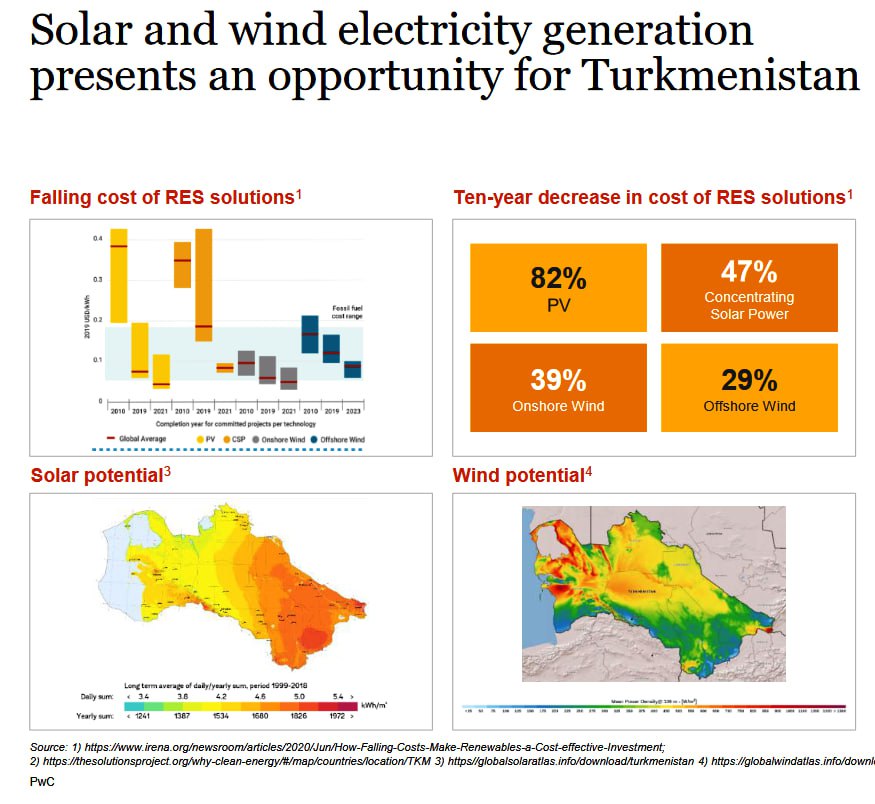Despite significant solar and wind energy potential, Turkmenistan has minimal installed renewable energy sources, according to a report by the Asian Development Bank (ADB).
"Continuing heavy reliance on fossil fuels under a scenario of business as usual could become unsustainable in the long run without the adoption of environmentally sustainable practices."

The ADB notes that while presenting considerable investment opportunity, the hydrocarbon sector is expected to be subject to more stringent environmental controls on its operations as a condition for receiving financing.
"The evolving climate change agenda has implications for hydrocarbon-rich Turkmenistan".
Turkmenistan has the world's fourth-largest reserves of natural gas and is one of the region's key suppliers of this fuel.
The devastating effects of climate change felt most keenly in Central Asia are spreading desertification, water scarcity, heat waves, and droughts.
Official Ashgabat plans to take several measures, according to experts at the regional finance institute.
The first measure under consideration is to improve energy efficiency in the production, consumption, and transportation of hydrocarbons, including preventing methane leaks.
Second, Turkmenistan has vast potential for developing renewable energy such as solar and wind power, so investments to diversify sources could bring gains.
Third, in fostering technological advances, the country plans to explore the development of green hydrogen by learning and adopting modern practices used in developed countries.
It also plans to introduce various carbon capture, use, and storage technologies to reduce harmful emissions into the atmosphere.
"Implementing these measures requires further policy reform and institutional strengthening".
The United Nations Common Country Analysis Update 2022 for Turkmenistan said that modernizing infrastructure could eliminate 75% of these methane emissions. More than half of this reduction would come at no net cost.
In 2016, Turkmenistan ratified the Paris Agreement to restrain global efforts to reduce greenhouse gas (GHG) emissions by submitting its updated nationally determined contribution in 2022.
The update established the ambitious goal of reducing GHG emissions by 2030 to 20% below 2010 emissions.
Various means of reducing GHG emissions have been identified for application in several sectors of the economy, notably energy, industry, transport, housing, and municipal infrastructure.
The government has prioritized reducing fossil fuel emissions since the energy sector produces 85% of GHG emissions.
Daryo previously wrote that Turkmenistan could technically become a solar energy source for Central Asia.
Under high solar radiation conditions, like in Turkmenistan, concentrated solar power may be able to generate electricity at costs below 5 - 6 cents per kWh
Credits: Eziz Boyarov, Ashgabat
Comments (0)